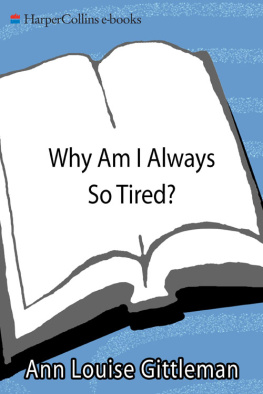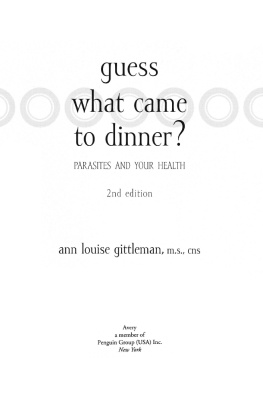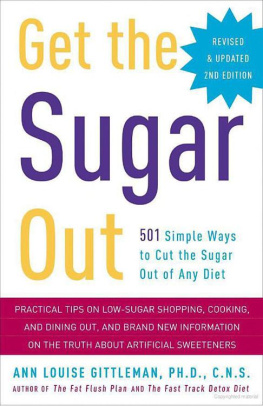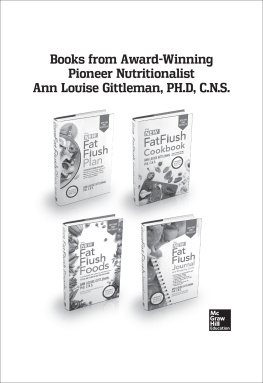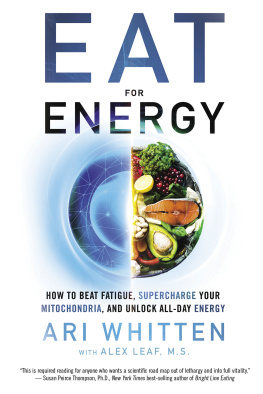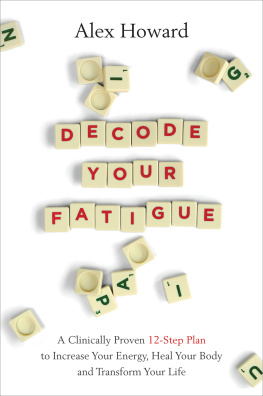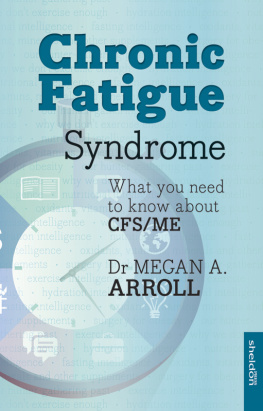This book is dedicated to Carol Faye Templeton
whose boundless energy I wish for everyone.
F or the past twenty-five years I have dedicated myself to the practice of nutritional medicine. As is true in most general medical practices, a preponderance of my patients have been womentired women.
Having immersed myself in this quarter-century quest for solutions to the chronic fatigue epidemic, I was delighted and gratified to read Ann Louise Gittlemans new book Why Am I Always So Tired?
Unexplained chronic fatigue is probably the main reason for the sudden popularity of alternative medicine. People are tired of being told that their fatigue is probably in their heads due to stress or psychiatric causes. In traditional medicine, if the routine physical exam and blood tests are normal, the quest to delve any deeper in to why am I always so tired? usually ends.
A nutritionally orientated doctor may probe into often overlooked areas like diet, food allergy, blood-sugar imbalance, vitamin, mineral, and other metabolic disorders, and adrenal glandular activity. If the patient has chronic fatigue syndrome, the investigation extends to the immune system and to any hidden sources of infection.
This book is a major eye-opener and should serve as a powerful tool in the nutritional treatment of chronic fatigue. Ms. Gittleman has put forth a rather bold and daring thesisthat copper overload and an imbalance in body levels of two trace mineralscopper and zincmay be a root cause of most unexplained chronic fatigue conditions and is intimately associated with low thyroid and adrenal gland problems.
To propose that these two trace minerals are the common denominator of what makes most people tiredis startling. Yet, she develops and defends this position in a step-by-step fashiondocumenting how the American public has become overloaded with copperfrom copper containing pesticides used on fruits and vegetables to copper that leaches into our water supply and the shocking realization that estrogen causes our bodies to retain copperwhich renders women much more susceptible to the copper assault. Environmental chemicalswhich have estrogen activitymay compound that assault. Add to this another startling fact: the dietary approach many health-conscious people have adoptedwith its emphasis on complex carbohydrates and plant food and its prohibition of red meatcan accelerate copper overload.
It took courage and conviction for Ms. Gittleman to challenge the very diet that she championed in the early 1980sbecause of its repeated connection in her research and clinical practiceas producing tired bodies with overactive minds. The book is replete with stories of tired people eating a variety of plant-based diets who could not shake their fatigue until the high-copper foods like soy (perhaps the worst offender), whole grains and avocado were reduced and zinc-rich foods consisting mostly of eggs and flesh proteins were replenished. She contends that this diet, which flies in the face of the popular lacto-vegetarian approach, restores zinc and copper to a more healthful level.
But dont be discouraged because Ms. Gittleman provides an energy revitalizing program with a variety of menu plans to transition into a diet that can maintain copper and zinc balance in the future.
For the health practitioner, the section on the proper diagnosis of zinc-copper imbalance was most helpful. Ms. Gittleman intones that it is easy to miss a diagnosis of copper overload because tissue levels of copper may be high while blood levels may be low. It takes patience and careful scrutiny of the laboratory parameters she has set forth to make the diagnosis.
Therefore, she feels that many cases of copper overload have been missed by not knowing some basic ground rules of test interpretation.
I am so intrigued by this book that I intend to search for zinc-copper imbalances in my tired patient population. This may well be a seminal booka courageous eye-opener that could fundamentally alter our approach to the treatment of chronic fatigue.
MICHAEL ROSENBAUM, M.D.
D uring the latter half of the twentieth century, a new health problem has developed, causing many people to feel fatigued. The problemthe buildup of copper in body tissuesis something most doctors know nothing about, so the condition almost always goes undiagnosed and untreated.
Many people who are tired in this day and age have no idea why they cant regain their energy. Although they may try everything from fad diets to treatments for medical conditions that are suspected as the culprits behind the tiredness, they often are baffled; nothing seems to reverse their fatigue. One of the reasons for this dilemma in many cases is that they havent treated the real cause of their fatigue, which may be copper overload. I wrote this book for all of those people, including myself, who have been fatigued because of copper overload and havent known the real reason why.
In Chapter 1, Ill take you through the frustration I experienced at not being able to help my clients regain their energy, and Ill explain how that frustration caused me to keep looking for the answers until I found the strong correlation between copper imbalance and fatigue.
In Chapter 2, youll learn what most doctors know about copper and copper overload, and youll see the new information Ive discovered about how copper excess and copper-zinc imbalance can cause fatigue and other health problems. Chapters 3 through 5 explain the many reasons that fatigue from copper overload is so common. These chapters cover surprising contributors to copper-induced fatigueeverything from trendy light diets to widespread use of the birth control pill to excessive stress. Then, in Chapter 6, Ill show you that fatigue really is the tip of the iceberg of the many common health problems copper overload can cause. When you take steps to reverse copper overload, you can not only improve your energy but also alleviate or even eradicate numerous other health complaints in the process.
The second half of the bookChapters 7 through 11is devoted to showing you how you can regain your energy and health by reversing copper overload. In Chapter 7, youll learn how you can determine if copper overload is the source of your fatigue and other health problems. Then, in Chapters 8 through 11, Ill take you step by step through the time-tested program Ive developed to help individuals reverse copper overload and regain energy. The program involves diet, use of the right supplements, and stress management. Its a program Ive fine-tuned over the past decade and used with great results with thousands of my clients whove had copper overload and the fatigue that accompanies it.
Ive been working with individuals whove had copper-induced fatigue for more than ten years, and I know how frustrating it can be for individuals who have this condition and dont know it. If youve been discouraged by fatigue that hasnt lessened no matter what you do, take heart. If copper overload is an unsuspected factor behind the fatigue youre experiencing, Im confident that the program I outline in this book will help you.
This book is intended solely for education and information, not as medical advice. Please consult a medical or health professional if you have questions about your health.
Part I
Searching
for Answers
to Fatigue
Chapter One
Uncovering the Copper Connection to Fatigue
M ore than a decade ago, I was beside myself with frustration in my nutrition counseling career. I couldnt get to the bottom of a mysterythe mystery of why a significant number of my clients were always so tired. I was determined to help my clients feel better, so I offered them all types of cutting-edge nutrition advice that I believed would help their energy. No matter what I tried, though, many of my clients continued to experience fatigue. This perplexed me. Becoming increasingly frustrated, I searched high and low for answers.

